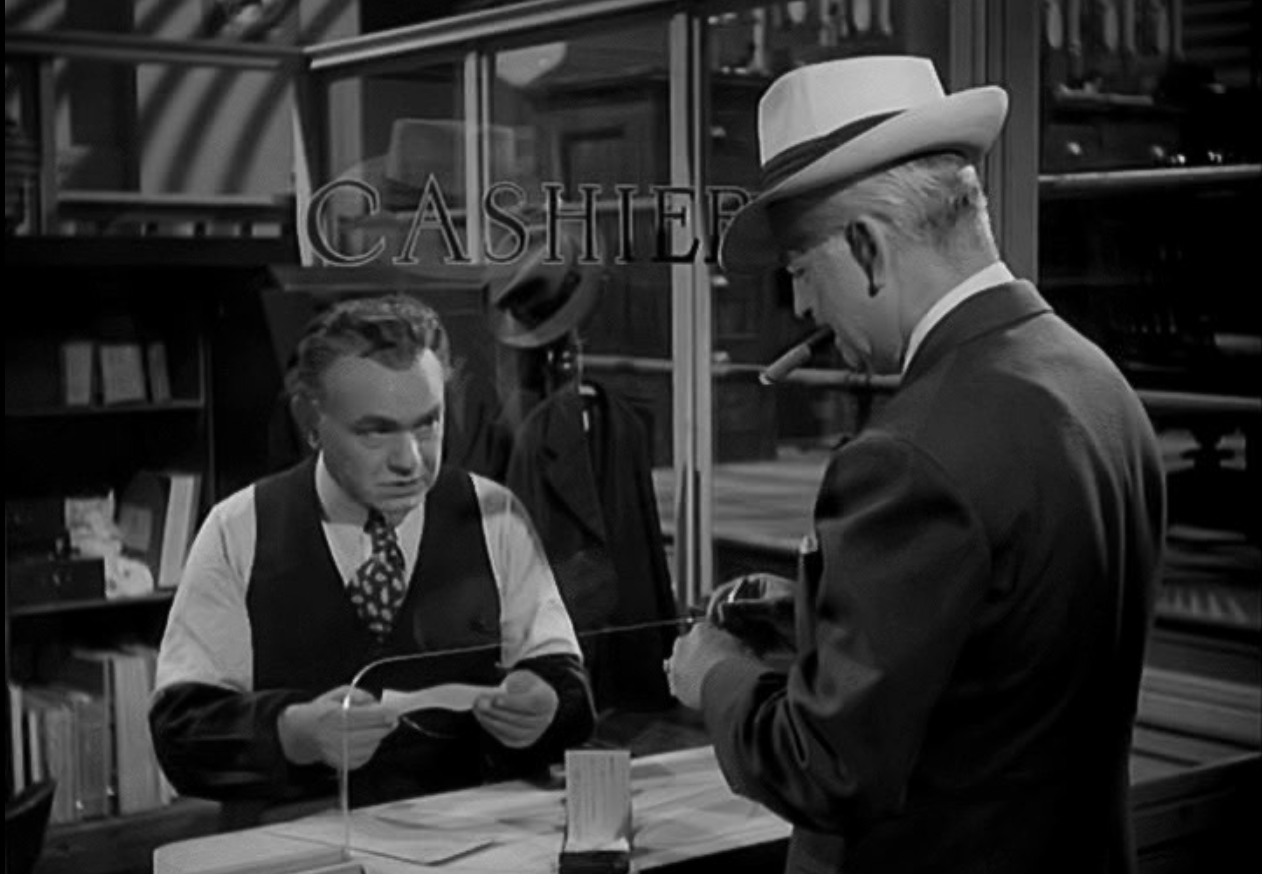Movie Review: Scarlet Street (1945) directed by Fritz Lang
It’s 1934, well into the Great Depression, but at least Christopher Cross (Edward G. Robinson) has a job. Indeed, there’s a party tonight celebrating his 25th year as a cashier for the J.J. Hogarth (Russell Hicks) upscale menswear concern. In commemoration, the boss presents him with an engraved watch. Then Mr. Hagarth is called away by a lady who the workers are pretty sure isn’t his wife. Chris muses that it might be nice to have a pretty woman who loves you. Reluctant to go home just yet, Chris wanders around Greenwich Village for a while.

Chris comes across a young woman being assaulted by a man who he coldcocks. Chris, a good citizen, calls for a police officer, but the man recovers and runs away before the policeman can arrive. The woman, Katherine “Kitty” Clark (Joan Bennett) insists on Chris staying with her for a bit as they get a bit to drink and in her case eat. Kitty allows Chris to believe that she’s an out-of-work actress (her real occupation is never named) and Chris allows her to believe that he’s an artist by admitting he does a bit of painting. Kitty makes up in her head that he’s a more famous and prosperous artist than he’s letting on.
The next day, we learn a bit more about what’s really up with both of them. Chris is the second husband of Adele Cross (Rosalind Ivan), who apparently married him for his modest but steady income and is constantly bugging him for more money. She has access to a decent stash, a life insurance payoff from her police officer first husband, Homer Higgins (Charles Kemper), who was presumed dead of drowning when he attempted to save a suicidal woman. However, Adele is saving that for her old age and refuses to touch it. She despises Chris’ painting hobby (he works in the bathroom) and begrudges every penny he wastes on paints and canvases. Since painting is the one thing that makes Chris happy, he doesn’t want to give it up, even though he’s been repeatedly told he has no talent.
Kitty, meanwhile, is in love with Johnny Prince (Dan Duryea), the same man we saw attacking her earlier. He’s a louse who’s always on the brink of making it big if he just had enough dough, and keeps taking it from Kitty even though she’s no better off than he is. Kitty’s roommate Milly Ray (Margaret Lindsay) keeps telling her Johnny’s no good, but Kitty’s infatuated with his bad boy charm. When he learns that Mr. Cross is supposedly well-off and has a bit of a crush on Kitty, he gets the idea of Kitty leading Chris on to bilk money out of him. Kitty finds Chris pleasant to talk to but physically repulsive, and is reluctant to agree. But a girl’s gotta eat.
Between the initial misunderstandings, the deliberate bad actions of several characters, and a couple of nasty coincidences, it all ends in tears.
This film noir was loosely based on the novel La Chienne by Georges de La Fouchardière, which had also been filmed by Jean Renoir under that title in 1931.
Edward G. Robinson plays a bit against type as not a tough guy, but a quiet man who’s kept his head down and done his job and not rocked the boat for most of his adult life. Being talked into doing dubious things is both frightening and a little freeing for Christopher Cross, but he’s still got a lot of bottled up frustration that eventually explodes.
Kitty does feel bad about taking Chris’ money and pretending to like him more than she actually does. If they could have been actual friends, she could have lived with that. But she isn’t willing to cross Johnny, and does like having nice things, so she goes along with it, even when he comes up with a bonkers scheme to make her look like an artist herself.
Johnny, of course, is a no-good punk who is just charming enough on the surface to fool people who aren’t looking for the hook, or who have fallen in love with him. He largely digs his own grave.
And Charles Kemper is funny as the not actually dead Homer Higgins, who wears a fake eye patch and thinks he’s going to get money from Chris to keep Adele from knowing she’s a bigamist.
Of course, things reach a crisis point and everything goes sour.
The ending had some trouble with the Hays Code, as Chris has gotten away with murder, but him becoming a homeless, jobless derelict haunted by voices in his head was considered punishment enough to fit the overall code requirements. The movie still got banned by local film boards with higher standards.
I was lucky enough to see this in a good print (as a public domain movie, a lot of the versions floating around are of poor quality) which showed Fritz Lang’s direction off well. A couple of standout moments for me were the two times a love song record gets stuck and repeats, and the flickering motel sign when Chris contemplates where his life has led.
Content note: murder, attempted suicide, assault. It’s heavily implied that Johhny and Kitty are having extramarital sex, and Chris is emotionally unfaithful to Adele, even if he’s not initially trying to get Kitty in the sack. Emotional abuse by Adele and Johnny to their partners. Alcohol abuse. Chris is not punished by the law for his crimes. Older teenagers on up should be able to handle this.
Recommended to film noir lovers and Edward G. Robinson fans.

